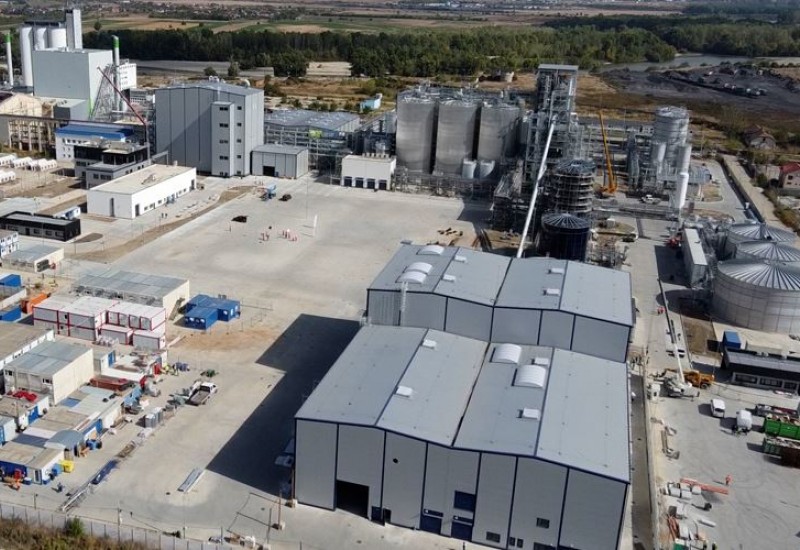Feature article – UK REACH ATRm: Four amber flags & an opportunity
Sue Bullock and Richard Bishop of TSG Consulting highlight priority areas for comment following analysis of the UK REACH consultation on the proposed model for registering chemicals manufactured in or imported to Great Britain*
The Department for Environment, Food and Rural Affairs (Defra) UK REACH consultation outlines an alternative transitional registration model (ATRm) for the registration of chemicals already registered in the EU in Great Britain (GB, i.e. England, Scotland and Wales). This reduces hazard data requirements and adds emphasis around ‘use and exposure’ in GB. It also empowers regulators to request further data to support chemical assessment and fast-track restrictions to control use. Minimising hazard data requirements, it would allow registrants to lean on existing hazard classifications submitted under EU REACH that are publicly available on the ECHA database.
This more lenient stance on hazard data is tempered with a greater focus on use and exposure data to better target risk. Under the proposal, registrants would have to provide more detailed information on uses across the substance lifecycle than the current UK REACH registration process demands.
Further changes are proposed to ‘right-shape’ procedures lifted from the EU chemicals registration process for GB. Devised by Defra in collaboration with the Health & Safety Executive (HSE), who will handle GB registrations, and the Environment Agency, the suggested approach aims to foster better efficiency.
What does this mean for the chemicals industry?
The proposal’s headline message centres on making GB registration of chemicals already registered under EU REACH less costly, principally by relieving industry of the need to pay for data twice. While less of a rubber stamp exercise than many feared, closer examination reveals dependencies, uncertainties and potential repercussions that could present other challenges. For instance, the proposal states that using ECHA conclusions on hazard data could “reduce the costs associated with submitting a registration dossier under UK REACH by 70% against current UK REACH baselines”.
But meeting additional data requirements, such as those surrounding use and exposure data, could be onerous and time-consuming. TSG Consulting has identified four watch-outs or ‘amber flags’ that GB manufacturers, importers and users might do well to consider in their own context.
1. Shifting from hazard to risk is laudable, but pay attention
EU REACH is a notoriously lengthy and complex piece of legislation. Its transposition to UK REACH compounded this, so simplifications that do not compromise worker, public or environmental health will be broadly welcomed. Nonetheless, an increased emphasis on risk comes hand-in-hand with the need to ensure intended use of chemicals is well described and demonstrably safe and that chemicals are then used only as intended.
To satisfy this, registrants will have to supply reliable information about use that may not be readily available and is potentially difficult to obtain. Compliance will be especially complex for chemicals with extensive and varied downstream use cases or where registrants’ customers act as distributors.
Defra proposes grouping chemicals in three levels according to their hazard profile and the tonnage imported/year. For Level 1, which applies to non-hazardous substances imported at 1-10 tonnes/year, exposure information requirements are similar to those under EU REACH. The main difference is that registrants will have to detail how a substance is disposed of if not fully spent in its intended use.
Level 3 applies to the most hazardous substances, irrespective of tonnage. This means HSE will require use and exposure data in the lowest tonnage band as well as continuing to require Chemical Safety Reports for higher quantities. Requirements for Level 3 are strict but relatively straightforward for most hazardous substances, which are generally already subject to other regulations on control and exposure. Registrants will have to demonstrate how they propose to ensure safe use, for instance by specifying personal protective equipment, duration of use or operational conditions.
When it comes to Level 2, which we anticipate will apply to most registrations, matters get more complicated. Importers of 1-10 tonnes/year will be subject to the same environmental information requirements as importers of >10 tonnes/year under EU REACH.
Moreover, all registrants will have to provide data on how and where a substance is used. This includes the number of sites and workers on each of them, plus information on training, health monitoring, maximum predicted exposure and measures taken to manage this, such as segregation and ventilation.
It is rarely easy to obtain this level of detail from the supply chain. Customer use and exposure questionnaires provide useful insights, but uptake tends to be limited. In the absence of sufficient information, registrants would likely have to outline more stringent and conservative risk management measures on safety data sheets.
2. Divergence on hazard classification could prove sticky
Lack of regulatory alignment will make using EU classifications difficult. When UK REACH came into effect, it recognised the same number of hazard categories as EU REACH. Since then, the EU has recognised important new hazard categories covering endocrine disruption and persistence, bioaccumulation, mobility and toxicity in the environment but they have not been implemented in UK REACH or GB Classification, Labelling & Packaging of Chemicals (CLP). The consultation document is silent on this. Substances with these new hazard classifications are among those identified as being of very high concern, alongside chemicals classified with regard to their potential to cause cancer, genetic mutations and toxicity to reproduction.
A greater focus on risk could be undermined if the underlying hazards are not fully recognised and it is not clear how the UK can rely on EU classifications if the systems for classification are different. In addition, chemical hazard classifications underpin many other pieces of legislation on occupational health and safety, environmental and consumer protection, and major accident hazards. Changes to the systems for chemical classification must be handled carefully because they can have a ripple effect, with the potential for unintended consequences under other sectoral laws.
3. Is it possible to side-step access to data?
Another area of potential concern is the lack of clarity surrounding use of publicly available hazard data. While the logic of using ECHA hazard data and classifications is obvious, how this would work in practice is less clear. ECHA’s online database states that the information it contains may belong to third parties who may have to give permission for it to be used. Perhaps the expectation is that registrants will apply for letters of access, but this is not specified.
It is standard practice for data owners to charge a fee for commercial use, which could impact Defra’s predicted cost savings. The way values for predicted no-effect concentration (PNEC) and derived no-effect level (DNEL) would be used to indicate risk needs ironing out.
Where PNEC and DNEL values extracted from EU sources are used to generate risk assessments in the UK, it is possible that they could be updated over time without necessarily altering a substance’s hazard classification on the ECHA database. The proposal does not explain how this would be monitored and managed, or who would be responsible.
It is also unclear how the HSE will evidence decisions or how industry could counter an agency request (e.g. transitional evaluation) without access to sufficient evidence, including hazard data, that characterises risk adequately. Industry may find that data sharing becomes more disjointed and harder to track. While HSE will probably be comfortable operating UK REACH with a more risk-based focus, there is much uncertainty surrounding enforcement.
The inherent complexity of exposure and use information presents challenges. Registrants of widely used chemicals might not be able to ascertain every single potential use case, nor the associated risk management measures. If care is not taken in drafting amendments to UK REACH to accommodate the ATRm, such omissions could equate to a regulatory breach, which HSE would be obliged to act upon.
4. Joint submissions need care
As with EU REACH, registrants of the same substance should work together to make joint submissions. Under the ATRm, the chemistry, toxicity, fate and ecotoxicity studies submitted under EU REACH will not be needed, meaning data sharing should be much less significant.
However, a reduced emphasis on hazard data could bring unintended consequences for registrants and HSE. As hazard data requirements are lower than those for EU REACH, the cost and effort of preparing and managing a joint submission should also be lower. This and an increased emphasis on use and exposure data that might be commercially sensitive could mean registrants are less willing to share data and more reluctant to set up or join a consortium, leading to potential discord within submissions.
Classification information should be submitted jointly, but when the data underpinning classification are lacking, there is more potential for disagreement. A lower barrier for a registrant to claim the lead role in a joint submission could result in companies with fewer resources and less knowledge or experience of chemicals regulation claiming the lead role, potentially leading to more administrative problems and disputes that might require HSE to act.
Under EU REACH, we have seen situations where entities allegedly claimed the lead role to make a profit, and there could be greater risk of this under UK REACH. We would advise companies to carefully review and consider the contents of any commercial agreements set up to comply with UK REACH registration requirements. It will also be important to pay close attention to communications sent within a substance group.
Conceiving a nimble, risk-based regime
Defra claims its ATRm will reduce the estimated £2 billion industry cost of moving from EU REACH to UK REACH by up to 70%. It also wants to rationalise and streamline certain processes, particularly restriction, where data and statutory consultation requirements can be aligned. This would in principle allow quicker, smarter decision-making to protect human health and the environment. This ambition has been welcomed by industry, and the proposed changes may well make processes simpler and faster.
However, as our amber flags indicate, there are practical details to be resolved. Industry leadership and vision have a critical role to play here. The sector needs to be proactive to seize this opportunity to improve the chemicals regime in the UK. UK REACH is also seeking opinions on the current restrictions process inherited from the EU and its recommended alternative.
The current process involves a six-month consultation for the initial risk assessment (RA) and socioeconomic analysis (SEA) followed by a second 60-day consultation on the draft SEA opinion. Splitting the delivery of opinions in this way results in ‘crunch points’, which can cause significant delays.
Under the UK REACH proposal, a single document would be prepared covering RA and SEA opinion elements in their entirety. The approach would require industry to be well prepared and ready to engage in a new restriction process. Understanding the impact of a restriction involves gathering and making sense of many different strands of information, relating to the use and functionality of the substance, release and exposure across the lifecycle, and the performance and availability of alternatives.
Previous proposals to restrict certain substances or uses in the EU have resulted in justified concerns regarding scope, enforcement, and competition, amongst other factors. This has accelerated a move towards grouping chemicals and discussion on essential use that is still evolving in the EU. The UK has a good reputation for practical, science-based regulation but will need to be adept in managing these issues to deliver safer use through restriction.
It is also worth noting that the proposals leave the authorisation regime alone. We are expecting to see some significant attention to authorisation when ongoing EU REACH revisions finally see the light of day. Authorisation has been clunky at times under the EU structure and the UK has opportunities to make it more effective, but may seek to do this through practical steps rather than a much-changed regime.
Road ahead
The UK REACH consultation process has been extended and will now close on 25 July. The first post-Brexit registration deadline for duty holders to submit chemical dossiers under UK REACH is 27 October 2026, so the authorities have just over two years to sign the ATRm into law.
* - Also contributing to this article were Dr Karen Cooksey, Rebecca Miller and Dr John Albaya, all of TSG Consulting















